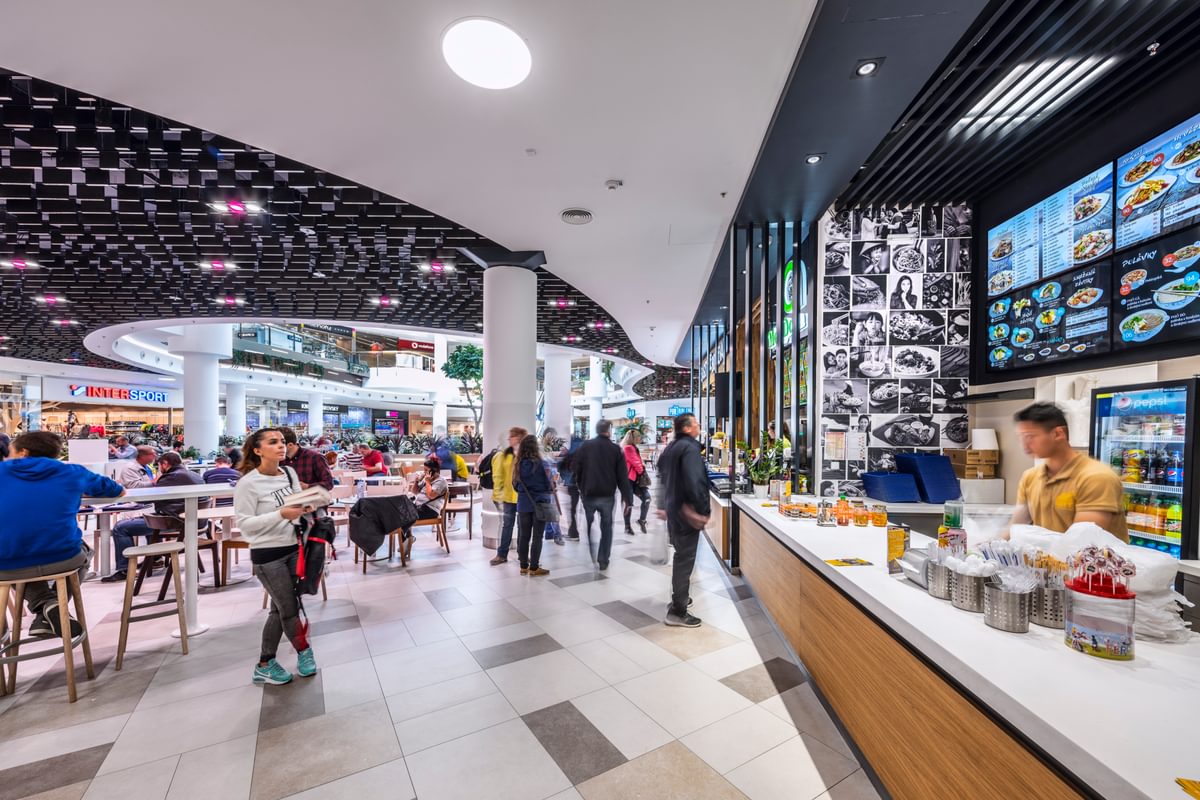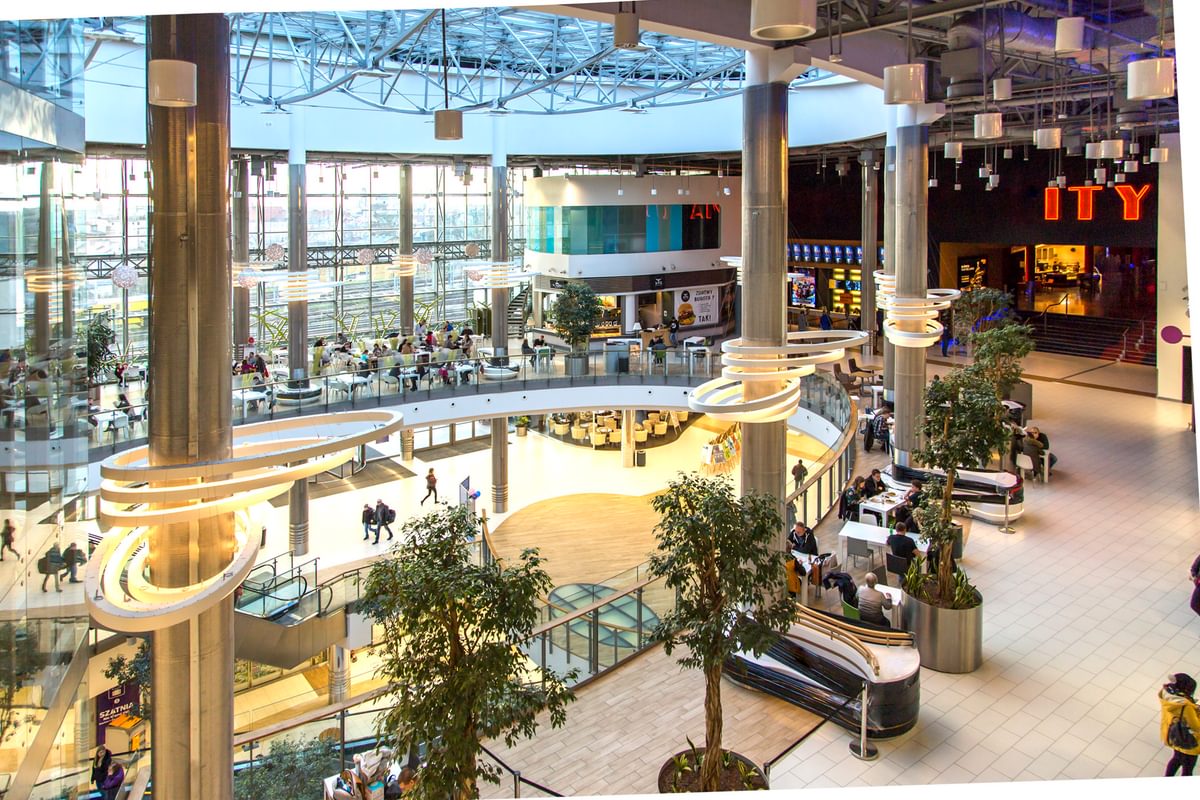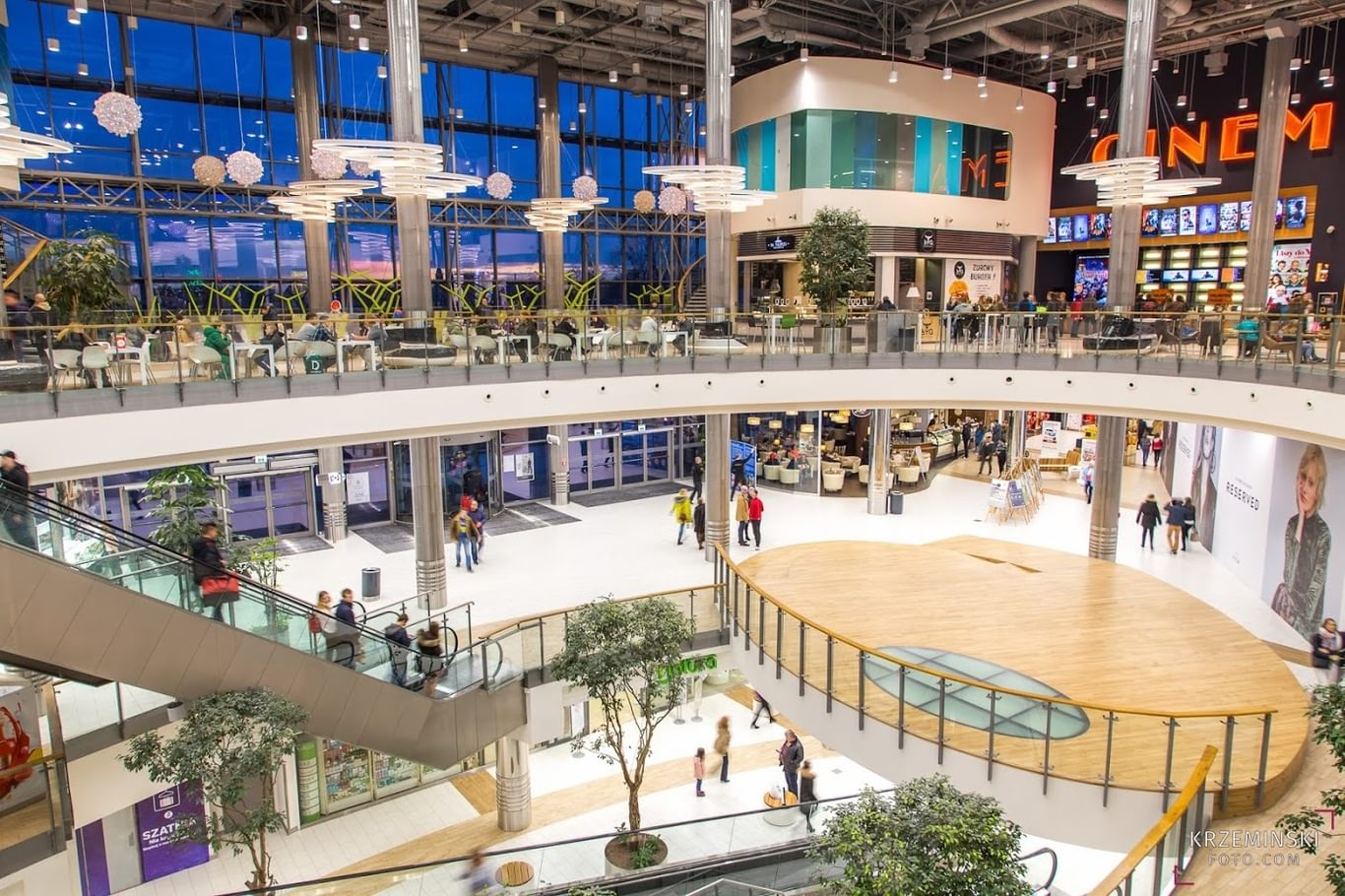
Retail refurbishments in Central and Eastern Europe – responding to the transformation of retail and evolving customer expectations
Shopping centres have been facing a growing number of challenges in the last few years, with many retailers failing to adapt quickly enough to competition from online retail platforms and changing customer habits that reflect new priorities and expectations. Chapman Taylor Group Board Director Jon Hale and Prague Studio Director Filip Pokorny examine how shopping centres in the Central and Eastern Europe region (and elsewhere) must adapt so that they can flourish in the coming years.
Letňany shopping centre in Prague
The need for action
The COVID-19 pandemic has brought the long-term problems facing shopping centres into sharper focus than ever before – retailers are closing or entering administration in worrying numbers, the leisure and hospitality industries are struggling and the viability of some shopping centres is becoming uncertain.
Although the pandemic will not go on forever, it could continue long enough to cause lasting damage to many shopping centres, even forcing them to close permanently. The pandemic will also likely lead to lasting changes in habits, as people become used to the growing options offered by omnichannel retailers. Even if the crisis ends soon, it is essential that shopping centre owners address the ongoing challenge by incorporating online platforms into their physical retail environments.
How should shopping centre owners and retailers respond?
Many shopping centres in the CEE region were constructed during the 2000s with the long-term intention of expanding. In view of the current challenging situation in the retail industry, this is not now likely to be a priority, and shopping centre owners and retailers need to consider how to optimise the space they already have, to focus on improving their online presence and to blend the physical built environment with emerging virtual opportunities.
One thing shopping centres can actively do is focus on maximising their convenience and comfort to compete with the relatively frictionless world of online shopping. This may include more, and better-designed, amenities (WCs, baby-change, etc.), the inclusion of more relaxation zones, an enhanced leisure offer, wellness and better overall customer services. Improving access and egress to and from centres with more frequent public transport services, secure cyclist facilities, increased parking comfort and the provision of EV charging stations can keep customers returning on a more regular basis.
Creating a sense of community and offering an extended range of services will help to integrate the shopping centre into the daily lives of local residents as well as those customers just passing by. Libraries, after-school clubs, dance studios and even healthcare facilities can increase the relevance of the centre as a focus for activities and amenities outside of the traditional commercial functions. F&B continues to be an important component of the shopping experience and a good gastronomic offer provides more reasons to dwell and recharge, as well as creating a positive social buzz.
These were some of the principles behind our refurbishment of the Letňany shopping centre in Prague, where we added a new entrance and remodelled the vertical circulation to improve access and simplify navigation. The extended food court introduced high-quality F&B offers and a relaxing environment based on the concept of extending the adjacent park inside the building. Enlarged public spaces with an abundance of natural greenery provide room to relax and also enhance the visibility of key anchor units, adding value for the retailers. We sacrificed some lettable area to improve the environment and to bring long-term social and commercial sustainability to the centre.
Similarly, we transformed Forum Gliwice in Poland, a ten-year-old shopping centre, inside and out, refreshing nearly all public areas. Movement through the centre was improved by changes to the common areas while a stair landing in the atrium was removed to allow the installation of a stage which now hosts events and artistic performances, providing a focal point.
Showrooms vs storerooms
In an age of increasing online retail presence, some brands are moving to a model where shops are essentially their showrooms, with products delivered to customers from centralised storage locations. Reduced demand for on-site storage means that some shopping centre units and ancillary spaces can be reduced freeing up space for more comfortable displays, for interactive customer services and increased opportunities for digital engagement. Conversely, some retailers are reducing front-of-house areas to increase storage capacity, holding larger stock on site, which can be selected online, or in-store via a touch screen, and delivered almost immediately.
We are witnessing a rapid increase in market share being taken by “e-shops” such as Alza.cz, Mall.cz, Eobuwie.pl (EFootwear.eu), Rohlik.cz and others, which are transforming retail in the Czech Republic and elsewhere in the CEE region. Alza established e-shops in the Czech Republic and Slovakia in 2000 and now offers localised websites for the UK, Hungarian, Austrian and German markets as well as serving the wider EU region. As Amazon expands its logistics network throughout the CEE region, this presents a further threat to the traditional shopping centre model.
However, as these e-shops increase their market share, they also generate a growing demand for physical locations, and shopping centres offer ideal opportunities for showrooms, service centres and collection and return points. Shopping centres therefore have to engage positively with e-retailers and develop a successful symbiosis to survive.
Reasons to go, or not to go?
With customers potentially less likely to visit for shopping alone, shopping centres need to consider how to increase the number of “reasons to visit”. One aspect of this is to actively encourage a community spirit bolstered by regular entertainment, educational programmes, cultural events and exhibitions, seasonal and weekly markets, fairs and social events.
Engaging frequently with customers and the community will help make the shopping centre an everyday amenity, not just a place to occasionally visit when you need to buy something. The use of social media and dedicated apps can provide an excellent platform for enhanced customer engagement and extends the reach of the physical space into the virtual realm, where it can be viewed, shared and commented upon by a fast-growing remote audience.
On the flip-side, we are also experiencing a boom in the “delivery economy”, with everything from cars to sushi being available at your front door, sometimes within just minutes of placing your order. This potentially provides a “reason not to go”, and shopping centres have to work closely with retailers, restaurant operators and last-mile logistics companies to position themselves as the focal point for this increasingly important sector.
With strategic locations, excellent access and, potentially, the space to accommodate short-term storage, “dark shops” and “dark kitchens”, some shopping centres could be partially repurposed to help ensure their long-term relevance and success. An app-enabled presence can again help to blur the boundaries between the physical and virtual retail, services and F&B worlds, offering more choice and a richer customer experience.
How can design help?
Within this rapidly evolving retail environment, shopping centres have to be highly adaptable and respond quickly to accommodate new concepts being developed by retailers and the increasingly sophisticated demands of customers. Designers need to focus on creating an attractive and engaging customer journey, ensuring high levels of convenience, safety and comfort within which to explore the emerging retail formats, to try the new culinary offers, enjoy the exciting leisure opportunities and make use of the new services being offered. Given the challenging commercial environment, designers will inevitably have to work within limited budgets while still including some of those all-important, strategically located and well-judged “Wow!” moments.
Architects can help support the sense of community by designing suitable and flexible spaces to host many different cultural and entertainment functions and by creating a truly welcoming environment. When Chapman Taylor designed the reconstruction of the original IGY shopping centre in České Budějovice, the project was welcomed by retailers and customers for the new extended offer and the attractive environment.
However, after the opening, we noticed some opportunities to enhance the customer experience further, and based on detailed observations of how the spaces were being used, we created a package of finely tuned measures to increase visitor comfort and convenience, including more soft seating, improved signage and additional mood lighting. These small, but cost-effective, changes have led to a measurable increase in footfall, dwell time and overall spending.
A whole-life approach to design
The increasingly dynamic retail, F&B and social scenes will mean that fit-out lifecycles will likely become shorter, so adaptability must be embedded within the concept, as must a committed approach to environmentally responsible design. With the challenging targets set for reaching carbon neutrality within the coming decade, retailers and shopping centre managers are under enormous pressure to transform their business models to ensure an economical and sustainable future. The days of fast-fashion and the throwaway economy are coming to an end and new models, based on reuse, recycling and regeneration, are on the horizon.
Shopping centres that engage fully in the principles of the circular economy and provide the right support for the necessary transitions will survive into the future. There will inevitably be some victims on the way, and it will be another task for architects to help repurpose these buildings and sites with enlightened investors. Bringing residential, office and other uses into existing shopping centre environments can create exciting new mixed-use offers with long-term viability.
While design can address some market challenges, it is also essential that shopping centre owners evolve the commercial models on which the business has traditionally operated to provide highly-flexible and appropriate tenancy options, not just for the new breed of retail entrepreneurs, but also for the well-established industry players, some of whom are fighting for their very existence.
Chapman Taylor has an industry-leading record in adding value to existing shopping centres and leisure venues. The designs we create reflect our understanding of what makes a creative, successful and resilient retail scheme.


